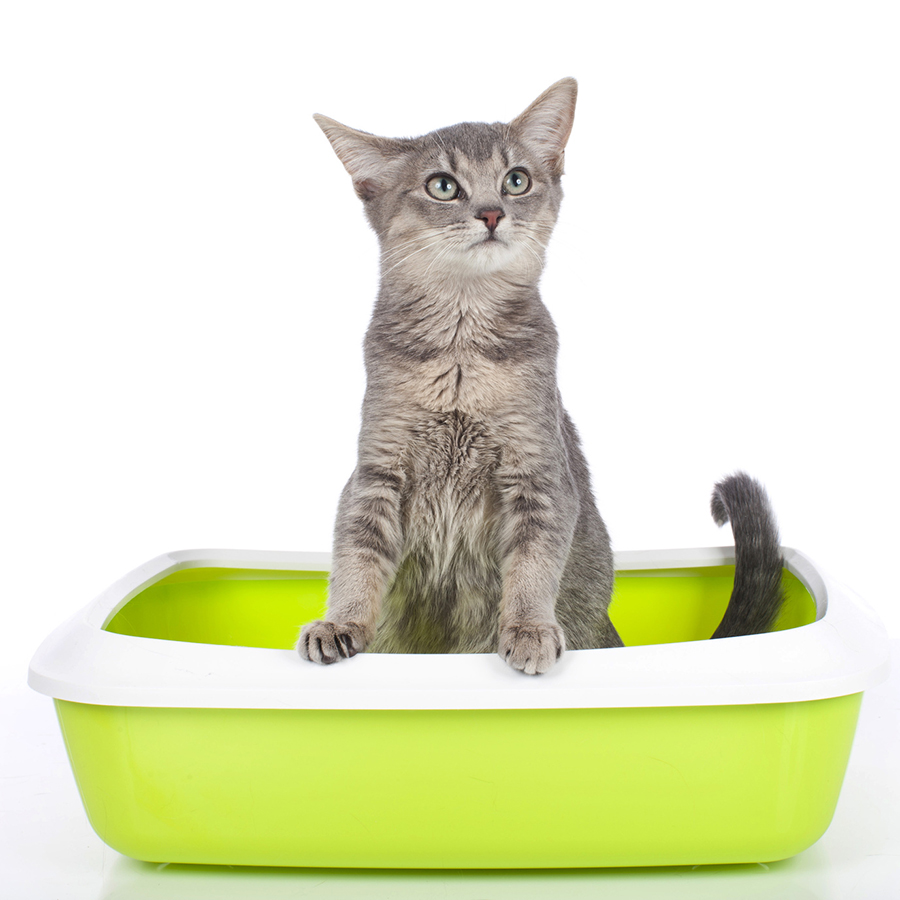Feline Lower Urinary Tract Disease (FLUTD)
General information
Feline lower urinary tract disease (FLUTD) is used to describe a debilitating condition that affects the bladder and urethra of cats. Several causes of this condition are known that produce symptoms either alone or in combination.
Major potential causes of FLUTD
- Feline idiopathic cystitis (FIC) 50-70% (idiopathic means no known cause)
- Bladder stones 10-25% (some of these have FIC)
- Urethral blockage 20-30% (some of these have FIC)
- Bacterial cystitis (infection) 2-10%
- Neoplasia (cancer) <2%
Signs to Watch For
- Increased frequency of urination
- Blood in the urine
- Straining to urinate sometimes accompanied by distressed cries
- Increased grooming of the area around the genitals
- Inappropriate urination in unusual sites (like the bath or sinks)
- Behavioural changes, occasionally the distress causes aggression
- Loss of litter tray training
Most non-obstructing cases of FLUTD are self-limiting with signs resolving over one to two weeks. Many cats will have recurrent episodes with variable frequency and severity of signs.
The most serious consequence is where obstruction occurs either with a stone or plug of material in the urethra. Without prompt veterinary attention a life-threatening emergency rapidly develops. Typically seen in male cats, unsuccessful attempts to urinate are followed by increasing distress, lethargy, and inappetance and vomiting; culminating in acute kidney failure and death.
Risk factors
Often there are a number of factors involved and the exact cause is not known so addressing as many of these as possible will give the best outcome.
- Age – young cats have increased risk of FIC, older cats have increased risk of bacterial infection & tumours
- Breed – Persians, Burmese and Himalayan cats are at a greater risk of developing calcium oxalate
- Obesity & neutered cats – are less active and may urinate less frequently
- Sex – male cats are more prone to a blocked urethra due to narrowed urethra
- Inadequate water intake and/or dry food only diet
- Stress – Certain individuals seem to be prone to developing FIC in response to stress. Stress can be due to a new person/baby entering the household, moving house, new cat or dog moving into the neighbourhood – or even just moving furniture around the house or changing their diet.
- Infrequent urination – anything that causes a cat to pass urine less frequently can increase the risk. This includes obesity, lack of exercise, poor weather, dirty litter trays as well as stress.
- Intercurrent disease – liver disease, diabetes and bacterial infections
- Abnormal anatomy – defects in the urinary tract may allow urine to pool and be retained (rare)
Ongoing management:
- INCREASE WATER INTAKE:
- Add water to the food, whether it is canned or dry. Start with small amount and gradually increase as your cat accepts it.
- Place water next to the food and at several extra places in areas where your cat has access (e.g. upstairs, on the porch, downstairs, outside).
- Keep water bowls very fresh i.e. change regularly.
- Some cats like shallow water bowls and water bowls filled up to the brim whereas other cats prefer to reach down into a water container. Experiment to see which your cat likes best.
- Offer filtered, distilled or bottled water.
- Try a pet “fountain” – available from pet shops and the internet.
- Leave some water in the bottom of the sink, bath or shower.
- Put a shallow bowl under a slowly dripping tap to allow constant fresh water (be careful not to block the plug hole!).
- Most cats prefer a fine-grained, unscented litter substrate (e.g. clumping litter) Boxes should be scooped 1-2 times daily. Clumping litter should be completely changed at least weekly and more often if more than one cat uses it. Clay litter should be changed a minimum of every other day (more frequently if other cats are using it). Wash litter box with warm, soapy water and dry well before adding new litter.
- The ideal number of litter boxes is one per cat, plus one. Litter boxes should be placed in at least 2 different locations, and preferably more if a multiple cat household. Locations should be private and have easy access. Boxes should not be placed next to noisy appliances.
- Prevent blocking litter box exit or entry of one cat by another. Have at least two ways for cats to enter and exit the box.
- Never trap or corner a cat in its litter box to give its medication or perform other procedures that the cat may dislike.
- Many cats prefer a litter depth of approximately 4cm; however preferences may vary. Cats prefer litter boxes that are at least 1.5 times the length of their bodies.
3. REDUCTION OF STRESS & ENVIRONMENTAL ENRICHMENT:
- Enrich your cat’s environment with toys that are changed daily, places to hide, opportunities to play and provide your cat with “vertical space” – places to climb, viewing and resting perches
- Provide a flexible routine for feeding, playing and grooming e.g. feed after morning shower and before dinner (don’t feed your cat upon awakening as your cat may learn to wake you for food)
- Ensure you spend time each day giving you cat what she/he enjoys – such as affection and playing with toys. Try to determine what toy preference your cat has
- Identify and resolve any conflict between cats in multiple cat households
- For more information refer to our Environmental Enrichment for Cats page.
4. PHEROMONES:
- “Feliway” phermomone plug in diffuser & spray – ask one of our vets
5. MEDICATIONS:
- If increasing water intake, environmental enrichment and litter tray modifications do not prevent recurrence of symptoms, then treatment of anxiety with antidepressants may help.




